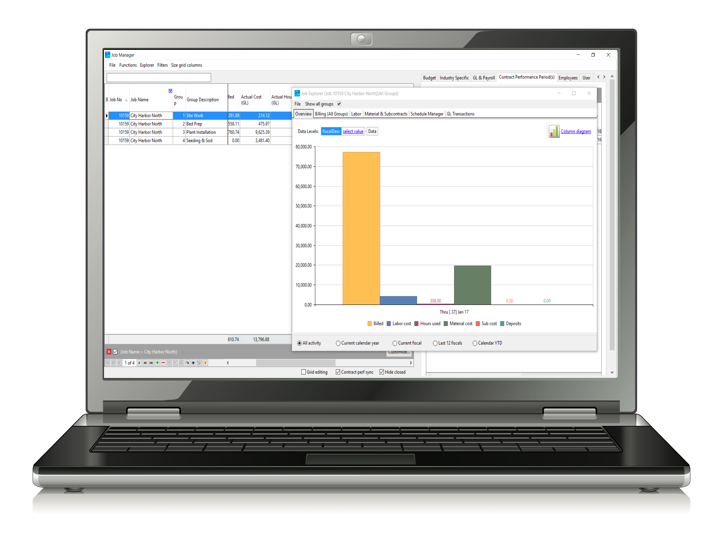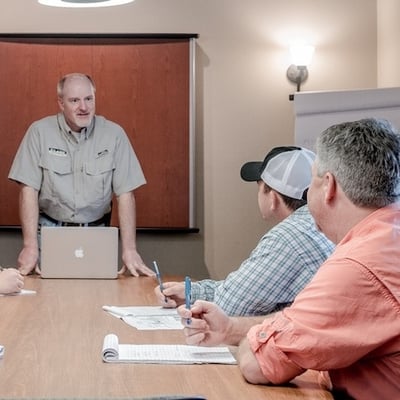 Let’s be honest, the financial aspect of your business can be a big challenge. While the landscaping part of your operation may be cut-and-dry to you, the inner-workings of the business, may not be. After all, financials are complicated and require a certain level of business acumen that typically only comes with a business degree or background.
Let’s be honest, the financial aspect of your business can be a big challenge. While the landscaping part of your operation may be cut-and-dry to you, the inner-workings of the business, may not be. After all, financials are complicated and require a certain level of business acumen that typically only comes with a business degree or background.
Even so, you are tasked with not only running a successful landscaping operation but also ensuring that your company continues to make more profit. It’s a lot of pressure.
While you feel as though you should be able to manage your business in a more profitable way, you may not be sure how. With so much data that needs to be tracked, you may not be certain of the best way to determine where your company is gaining—and where it’s losing.
You just want a better way to perform job costing for landscaping, that doesn’t require you to go out and earn a degree in accounting.
Let’s start with the basics and look at some best practices.
What is Job Costing?
If you’re going to get a better grasp on your profitability, it all needs to begin with accurate job costing. Job costing is the process of reviewing all associated costs on a job. Understanding the costs that are associated with running your business is absolutely critical to its success, as it is directly linked to your profitability.
For a landscaping business, there are five main cost categories that you must be tracking. These include the following.
1. Materials
This category includes all of the material costs associated with a job. Whether it’s pavers, mulch, gravel, or whatever else is required to get the job done, it needs to be tracked.
2. Labor
Your man-hours are a critical cost that must also be tracked. Every hour of the job, from drive time, to site prep, to post-job cleanup, should be accounted for in your data.
3. Equipment
 The costs associated with all equipment on a job include purchase costs, repair, maintenance, and operating costs on-site. If you used rental equipment, the direct cost of that equipment should be applied.
The costs associated with all equipment on a job include purchase costs, repair, maintenance, and operating costs on-site. If you used rental equipment, the direct cost of that equipment should be applied.
4. Subcontractors
If you hired subcontractors for the job, the direct cost of their services used for the job must also be tracked and included in the overall cost of the job.
5. Overhead
An overhead cost, that is, the cost of doing business should also be tacked onto your job cost. Overhead includes costs such as paying your administrative assistant, paying the lease on your facility, or insurance fees. You must always be thinking about recovering overhead costs, as this is an often-forgotten piece of the puzzle (and therefore a profitability killer).
Why Does Job Costing Matter for Your Landscaping Company?
Job costing is one of those tasks that some landscape business owners might assume they can get away with not doing. When you started out, it might have been a lot simpler to track data, but as you’ve grown, the task may have become seemingly insurmountable.
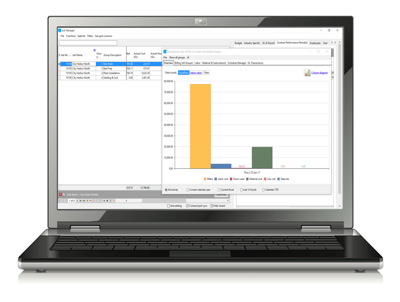 But job costing is important—arguably even more so as you get bigger.
But job costing is important—arguably even more so as you get bigger.
First and foremost, looking at the big picture, job costing helps you to determine whether you’re profitable or not. You can pick out which jobs are earning, and which are losing, and plan for the future accordingly. That means you can make changes that will ensure profitability on future jobs whether that means raising prices, switching out equipment, or maybe even dropping a client that simply isn’t going to produce enough profit.
But taking a step back, and looking at operations on a day-to-day basis, job costing also gives your crews measurable goals that they must meet in order to achieve profitability. If they don’t know what goals they should be aiming for (time-wise), then they’re never going to hit the mark. Job costing helps provide valuable direction.
Beyond labor, job costing also allows you to look at all the data and make other adjustments in order to stay on track. With job costing, you’ll be able to analyze how close your estimated costs are to your actual costs and make changes where they’re needed.
How to Perform Landscaping Job Costing
Now that you know what to track, and why it’s important, let’s look at some ways in which it can be done.
The process of job costing as a landscape contractor often begins with a landscape job costing spreadsheet. In theory, each of these five categories can be tracked through a program like Excel, though tracking everything through paper may be risky. Paper spreadsheets can get lost or misplaced.
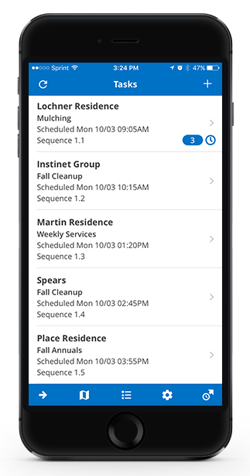 It’s also important to recognize that Excel is not error proof. If you set up formulas incorrectly, or information changes, then your data is going to be skewed. Bad input equals bad output.
It’s also important to recognize that Excel is not error proof. If you set up formulas incorrectly, or information changes, then your data is going to be skewed. Bad input equals bad output.
It’s also possible that multiple tracking methods may be used. For instance, you may use paper spreadsheets to have your foremen track daily hours on each job but you might use QuickBooks to track material costs. If using a multi-pronged approach it’s important that you’re bringing all of those costs together.
Landscape job costing software can also be used to track this data. With an integrative program designed to do it all, you eliminate the need for multiple systems that do not “talk” to one another. You reduce the risks associated with paper and data can also be entered and updated in real time.
Where Job Costing for Landscape Contractors Can Go Wrong
The biggest mistakes seen with job costing are related to incomplete or missing data. This commonly happens in the field, where foremen are required to use a landscape job costing spreadsheet to track hours, but forget to record everything. Without the use of a mobile app that can record data in real time, this task can easily become a burden.
With incomplete data, it is impossible to produce accurate job costs. But even worse, some landscape companies are working with no data at all. So often, we hear of landscape companies that are simply not performing job costing.
Whether it’s too complicated or something they just don’t have the time for, job costing may get pushed off.
Sometimes, we hear that landscape business owners are doing job costing in their head. They have a gut feeling for how much things cost, and that’s all they have to work with. It’s a mentality that: “I’ve paid the bills, gotten paid, and still have some money left—so I must be profitable.”
But relying on those assumptions is a big mistake.
After all, the entire purpose of job costing is to be able to make accurate decisions based on accurate data—not a gut feeling. With job costing data handy, you are able to make incredibly accurate estimates, ensuring that your budgeted versus actual costs on a job are in line with your profitability.
Therefore, what’s most important is not just what you’re measuring, but the accuracy of what you’re measuring. If you don’t have access to that information, then you simply cannot know whether you’re making or losing money on each of your jobs.
It’s not enough to come out ahead at the end. If you want your business to continue to become more profitable, then you need to know whether each and every job is worth keeping.
Using Landscape Job Costing Software
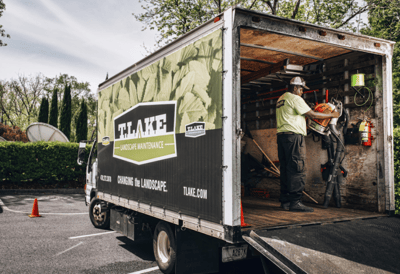 There’s no question that performing job costing is a way to ensure that you can continue to make your business more profitable. But if you don’t want job costing to be a forgotten or challenging task, then you might want to consider investing in software that will help you simplify the process.
There’s no question that performing job costing is a way to ensure that you can continue to make your business more profitable. But if you don’t want job costing to be a forgotten or challenging task, then you might want to consider investing in software that will help you simplify the process.
Using landscape job costing software that includes a landscape job costing template will streamline the entire process. It will become a task that is easy to remember to do. For instance, by allowing foreman to track hours on a mobile app, you’ll receive real-time data on labor that goes right into your software system. You’re now able to review budgeted versus actual hours in real time, allowing you to make changes while the job is still active.
Plus, instead of having multiple systems or spreadsheets to track everything from equipment costs to material, you can use a landscape job costing template to enter the data for the job and spit out the numbers you need.
It’s a simplified process—no accounting degree required.
Making the Smart Choice
By choosing to invest in landscape job costing software, you are making a choice that will make profitability achievable. Instead of playing the game of “wait-and-see” to know where your numbers stand, you’ll have that data at your fingertips in real time. That means you won’t miss a thing. You’ll be able to make changes that directly impact your company’s success.
In the end, the choice is yours. You can continue to feel overwhelmed by financial tasks like job costing. Or, you can have access to the data you need to make the process easy. By doing the latter, you’ll also ensure profitability and the future growth of your business.
If you’d like to learn more about streamlining your job costing with the help of Asset, give us a call at 800-475-0311 or contact us for a free demo.
Image Sources: T. Lake Environmental Design, Level Green Landscaping


